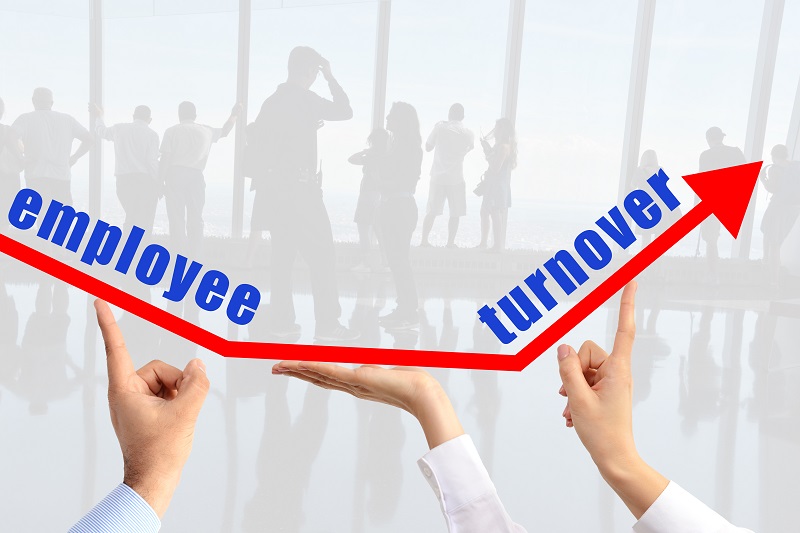Rising workplace injuries: the impact of high employee turnover

The November 2021 Bureau of Labor Statistics (BLS) recently released data on workplace injuries and illnesses, and the results are concerning. According to the report, although fatal injuries decreased, the rate of nonfatal injuries and illnesses in private industry increased from 2.8 cases per 100 full-time workers in 2019 to 2.9 cases per 100 full-time workers in 2020.
This may seem like a small increase, but when you consider that there are over 150 million full-time workers in the United States, that means there were over four million more cases of workplace injuries and illnesses in 2020 than in 2019. It is also worth noting that the report found that the rate of workplace injuries and illnesses increased in almost all industries, except for the manufacturing and retail trade sectors. Add to this concern the fact that many insurance companies I have spoken with have stated they saw employee injury frequency and severity rise in 2022.
This may be partly due to the “great resignation,” a term used to describe the current trend of employees leaving their jobs at an alarming rate due to a variety of factors, such as burnout, stress, and a lack of job security. Unfortunately, high employee turnover can significantly impact the frequency and severity of employee injuries. A study by the Liberty Mutual Research Institute for Safety found that workers are three times more likely to be injured during their first month on the job compared to workers who have been on the job for a year or more. Travelers Insurance’s May 2022 Injury Impact Report shows more than one-third of workplace injuries (35%) occurred during the first year on the job.
When employees leave their jobs, it can create a void that needs to be quickly filled. Many employers rush to hire new employees to fill these positions, often leading to a lack of proper training and a higher risk of injuries. New employees may not be familiar with the hazards of their job or the proper safety protocols, which increases the chances of an accident.
Furthermore, high employee turnover can hurt workplace morale and culture. Employees constantly leaving can create a sense of instability and uncertainty, which contributes to stress and burnout. The combination of high turnover and staff shortages means existing employees are overworked and more likely to make mistakes or take shortcuts that can lead to injuries.
To mitigate the negative effects of high employee turnover on employee injuries, employers need to focus on creating a positive workplace culture that promotes employee well-being. This can include offering support for mental health and well-being, promoting work-life balance, and providing opportunities for professional development. Additionally, it’s important to ensure that new hires are properly trained and that all employees have the necessary resources and support to stay safe on the job.
Onboarding a new employee can be an exciting time for both the employee and the employer, but it’s also a time when new hires are at a higher risk of becoming injured. New employees may not be familiar with the hazards of their job or the proper safety protocols. To reduce the chances of a new employee becoming injured, a comprehensive onboarding process is important.
The first step in onboarding a new employee is to provide a thorough safety-focused orientation. This should include an overview of the company’s policies, procedures, and expectations, as well as an introduction to the company’s safety culture and values. It’s also essential to provide new hires with information on the company’s safety program, emergency procedures, and the location of safety equipment and emergency exits.
Some jobs have OSHA-required trainings that new employees must receive before they begin to perform any work-related tasks. Therefore, you’ll need to determine those required for your business. Examples include Hazard Communication, Blood Borne Pathogens, Personal Protective Equipment, Fall Protection, Lockout/Tagout, Fire Prevention, Electrical Safety, or Evacuation Procedures.
Next, it’s essential to provide new hires with proper training. This should include job-specific training covering the tasks and responsibilities of the new hire’s role and training on the hazards and risks associated with the job. It’s also important to provide training on the proper use of equipment and tools and any other safety-related information specific to the job. Today, with staff shortages too many employers are rushing through this process, leaving employees vulnerable to injuries.
Another important aspect of onboarding is to provide new hires with a mentor or buddy. This can be an experienced employee who can provide guidance and support as the new hire learns the ropes. A mentor or buddy can also serve as a resource for safety-related questions and concerns.
It’s also important to establish clear lines of communication with new hires and make sure they feel comfortable asking questions and raising concerns. This can be accomplished through regular check-ins and meetings with managers, supervisors, or safety representatives.
In conclusion, the increase in employee injuries over the past two years is most likely due to employers having to hire so many new employees. Changes in onboarding new employees can be critical for reducing the chances of injury. It’s essential to have a comprehensive onboarding process in place that includes orientation, training, mentorship, and clear communication. By taking these steps, employers can ensure that new hires are properly prepared and equipped to stay safe on the job.
David R. Leng, CPCU, CIC, CBWA, CRM, CWCA, is author of “Insured to Fail,” “The 10 Laws of Insurance Attraction,” “Turning Premiums into Profits,” and “Stop Being Frustrated & Overcharged,” and is the Chief Risk Officer of the Duncan Financial Group in Irwin, PA, a member of Keystone. He is also an instructor for the Institute of WorkComp Professionals (IWCP).
SEVEN SECRETS
You’ll receive important information to help you avoid overcharges on your workers’ compensation.
